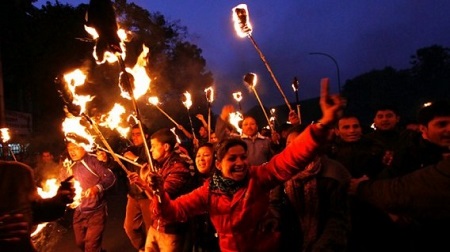 In a mere two year period between 2012-2014, as many as 127 women were branded as witches and hung in Jharkhand, a state in eastern India (“127 women were branded witches,” The Hindu, Mar. 16, 2016). The same thing happens often in Nepal. Earlier this month, a mob burned alive a 40-year-old woman in Chitwan district, Nepal, after a shaman fingered her as a witch who caused the drowning of a boy. “Hundreds of lower-caste women are thought to suffer abuse at the hands of ‘witch hunters’ every year in Nepal” (“Nepal mob burns ‘witch’ alive,” The Telegraph, Mar. 18, 2016). When a woman is suspected of causing an event such as an accident, sickness, or death, charges are trumped up against her and a gullible population take matters into their own hands. The murders are motivated by idolatrous superstition as well as revenge and greed. Anuja Agrawal, a professor at Delhi University, says, “Often there are long-term animosities between the perpetrators and victims which translate into witch-hunt. Witch-hunt is a convenient mechanism to get rid of not only women but also entire families” (“Greed for property and power behind Jhakhand witch hunts,”Hindustan Times, Sep. 19, 2015). (Friday Church News Notes, March 25, 2016, www.wayoflife.org, [email protected], 866-295-4143) Comments are closed.
|
Archives
February 2020
|
Ads do not imply endorsement | Policy/Terms of Service | About Us | Contact Us | © Life Work Academy, Inc.
 RSS Feed
RSS Feed

